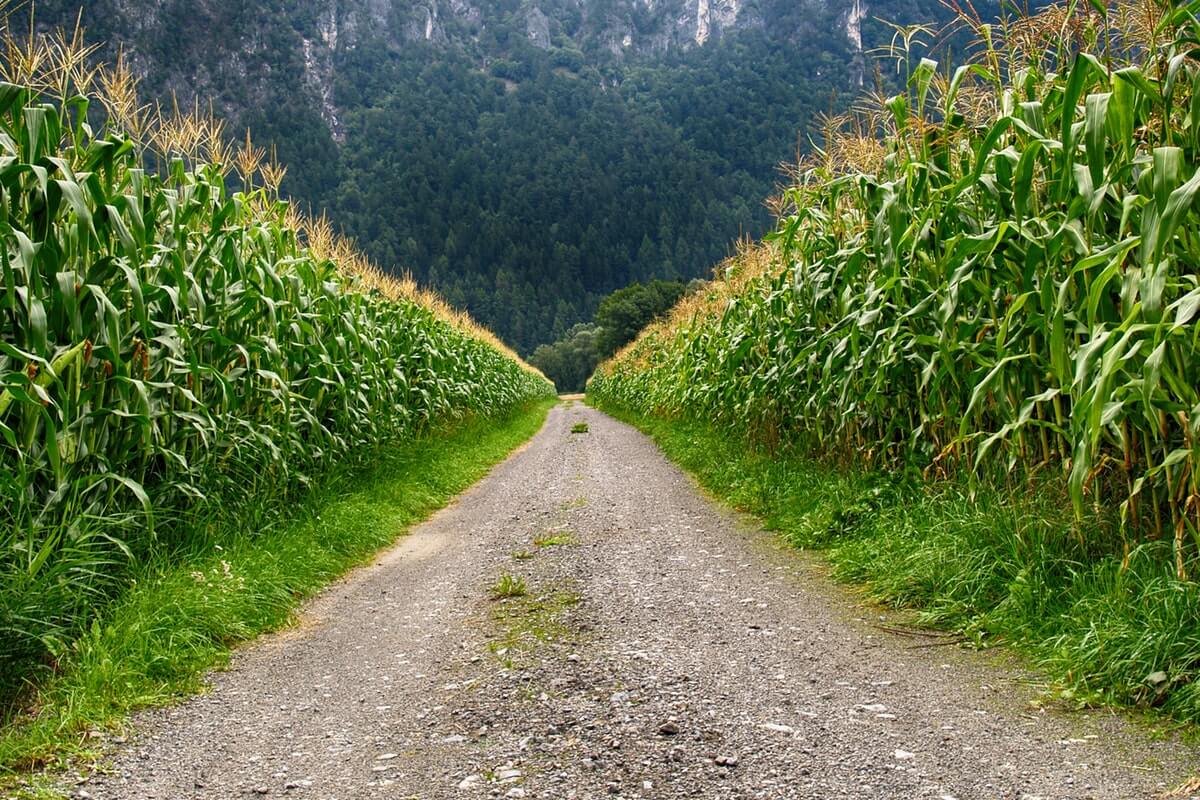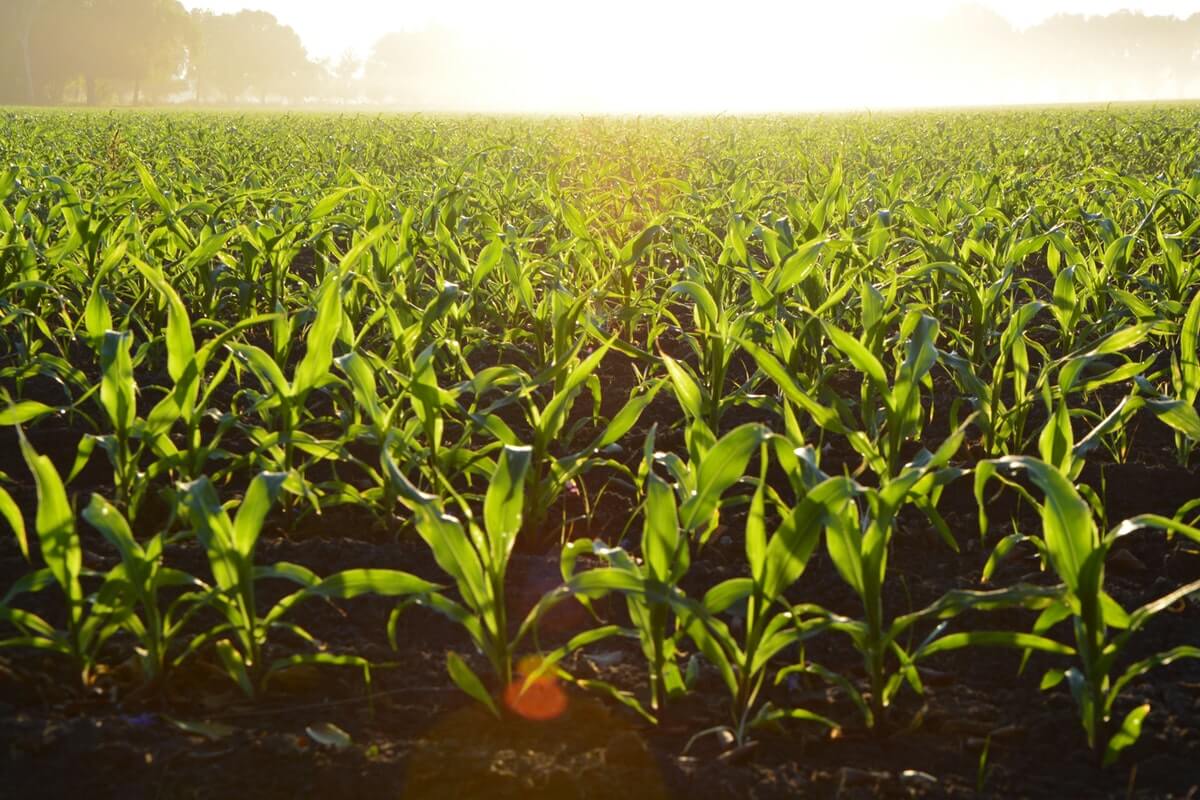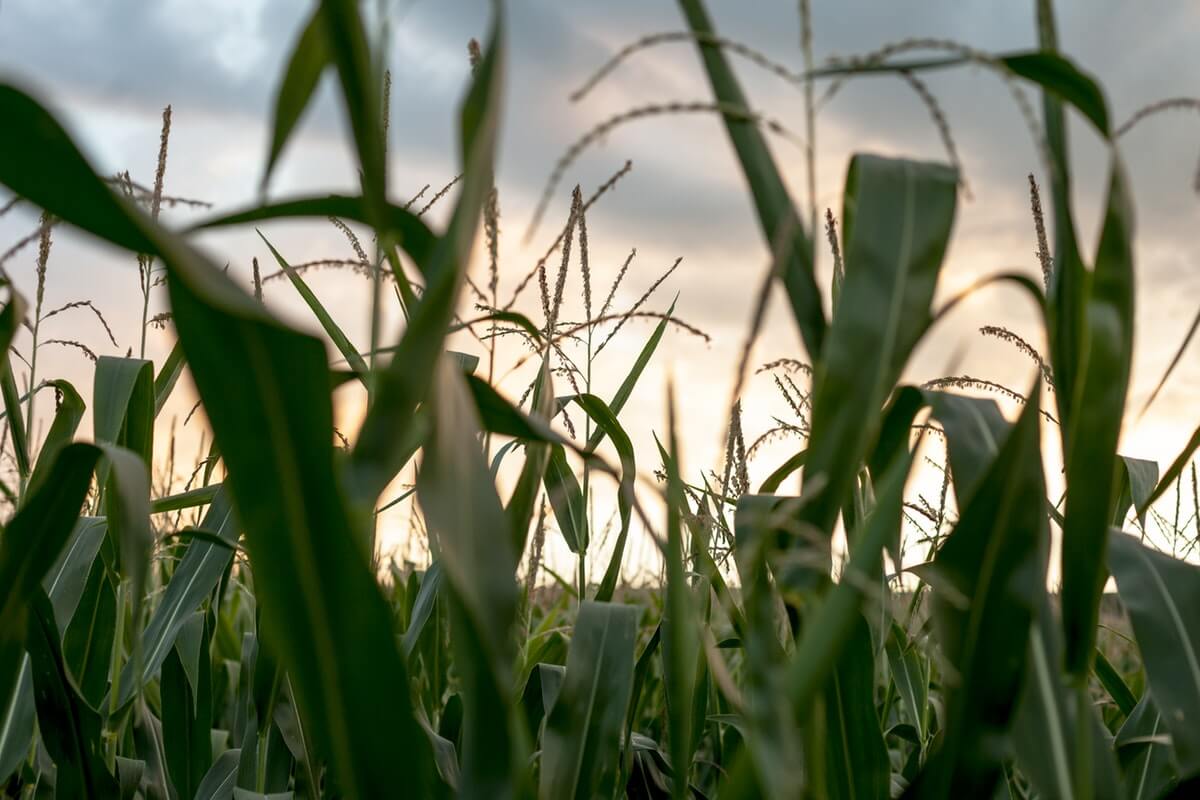Many gardeners believe that they must have a great deal of acreage available to grow corn, but this really isn’t the case. Selective breeding and new gardening techniques have made it possible to grow corn successfully in almost any garden. In this article, we discuss which plant spacing is ideal for corn. Read on to learn more on how far apart do you plant corn.
What You'll Learn Today
There Is Really No Hard-and-Fast Rule For Corn Spacing

Spacing is an important factor when it comes to facilitating good pollination and conserving resources such as water and fertilizer, but there are a number of considerations to keep in mind when deciding just how far apart you should place your corn plants.
1. Corn Height
Tall corn varieties do best when the rows they are planted in are about eighteen to twenty-four inches apart. Shorter varieties of corn can do well in rows that are only eighteen inches, or even a foot apart.
2. Weed Control
The closer together your corn rows are, the less trouble you will have with weeds. The corn can smother the weeds and block the sun, preventing weed growth.
3. Ease Of Pollination
Corn is naturally pollinated by the wind, so you don’t want your corn plants to be too far apart.
In a small garden, the best configuration is to have three or four, eight-foot rows spaced appropriately for the height of the corn.
This helps ensure that the pollen can be successfully moved from the corn tassels to the corn silks by the wind.
4. Maximum Growth
Corn that is excessively overcrowded will suffer from stunted growth. You should have a bare minimum of eight inches between your corn rows for short varieties. Taller varieties must have at least a foot of growing space between rows.
Corn: Row And Plant Spacing For Better Yield
How Tall Can Corn Get?
Variables such as soil nutrients, weather and the environment in general also contribute to the maximum height any type of corn can attain.
It’s very important that you provide your plants with plenty of sulfur, phosphorus and nitrogen and an abundant amount of water for maximum growth.
Temperature is also important. If you have a cold spell that exposes your corn crop to temperatures lower than 50F for an extended period of time, your plants’ growth will be stunted.
Different varieties of corn are different heights. Generally speaking, corn stands about eight feet high, but it is possible for some types to grow as tall as thirty feet.
The anticipated height of your corn plays a role in determining how far apart you should place your plants. Here’s a basic rundown of the types of corn and their usual heights.
1. Sweet Corn
This is the most popular for growing in the home garden. It’s great for eating right off the cob and also for canning and freezing. The heights of the many different types of sweet corn vary quite a bit.
- Sweet corn intended to be grown in containers only reaches a height of about four or five feet.
- Late season corn like Jubilee can grow to be seven or eight feet high.
- Early season corn like Sunglow grows to be four or five feet high.
2. Field Corn
Field corn is usually a commercial crop. One type is grown to produce feed and silage for livestock. It can grow to be fourteen to sixteen feet high.
There is also field corn that is grown to produce ears of corn for human consumption. This usually grows to be about twelve feet high.
3. Popcorn
These plants vary greatly in height. Some, such as Tom Thumb, are quite small and only grow to be about three feet high.
Other varieties, such as Strawberry, attain a height of four or five feet. Still others, such as Ruby Red and Robust, may grow to be eight feet high.
What Are The Tall Corn Varieties?

Taller varieties of sweet corn and popcorn will grow to be about eight feet high. Some of the top varieties in taller corn plants are:
- Silver Queen White Corn
- Golden Bantam Corn
- Giant Silo Corn
- Jubilee
Field corn that is used for feeding livestock can grow to be fifteen or sixteen feet high. When you buy your corn seed, read the packaging carefully to determine how tall the variety you are considering will grow and how much space you will need.
What Are Some Of The Short Corn Varieties?

Shorter varieties of corn may top out at about five feet. Top choices in shorter (dwarf) varieties of corn include:
- Yukon Chief Sweet Corn
- Early Sunglow Hybrids
You may get a higher yield with dwarf corn because you can plant individual plants just eight inches apart in rows that are only a foot apart. Shorter plants may also simply fit better in a backyard garden setting.
Which Plant Spacing Is Best For Corn?

It used to be thought that it was better to give individual plants plenty of space to spread out. Now we know that crowding them a bit is actually advantageous.
The individual plants support each other when crowded, and they crowd out weeds that would compete with them for soil nutrients.
Being close together makes successful pollination far more likely and increases your chance of a good yield for all your effort.
How To Plant Corn In The Home Garden
Frequently Asked Questions
Yes, you can plant corn 8-12″ apart in rows that are 30-36″ apart.
Plant fresh, plump seed (or soaked seed) about an inch deep. If your seed corn is old, dry or shriveled, plant it about 3/4 of an inch deep and soak the soil thoroughly to help the seeds get a good start.
Crowded corn grows bland tasting and starchy. If you plant different kinds of corn too close together, they will cross pollinate and you will end up with a grab-bag of qualities. If you want to keep your corn types pure and separate, you must plant your corn patches a minimum of fifty feet apart.
Each corn patch should be square to encourage effective, efficient wind pollination. This, in turn, will support good development of the cobs.
Those rows of corn left standing can help prevent road flooding during very wet fall and winter days. The dead stands of corn also act as a snow fence in the winter time to help keep the roads clear.
In my case, a gap from 30 to 40 centimetres is enough for corn to grow well.
Inches, mate, YOU’RE IN AMERICA!!!!!
Between rows or between plants?
The space between rows should be 30-36″. The space between plants should be 8-12″.
Who cares about metric, we plant by inches !!!!
Be considerate enough to give spacing in inches as well for us elderly